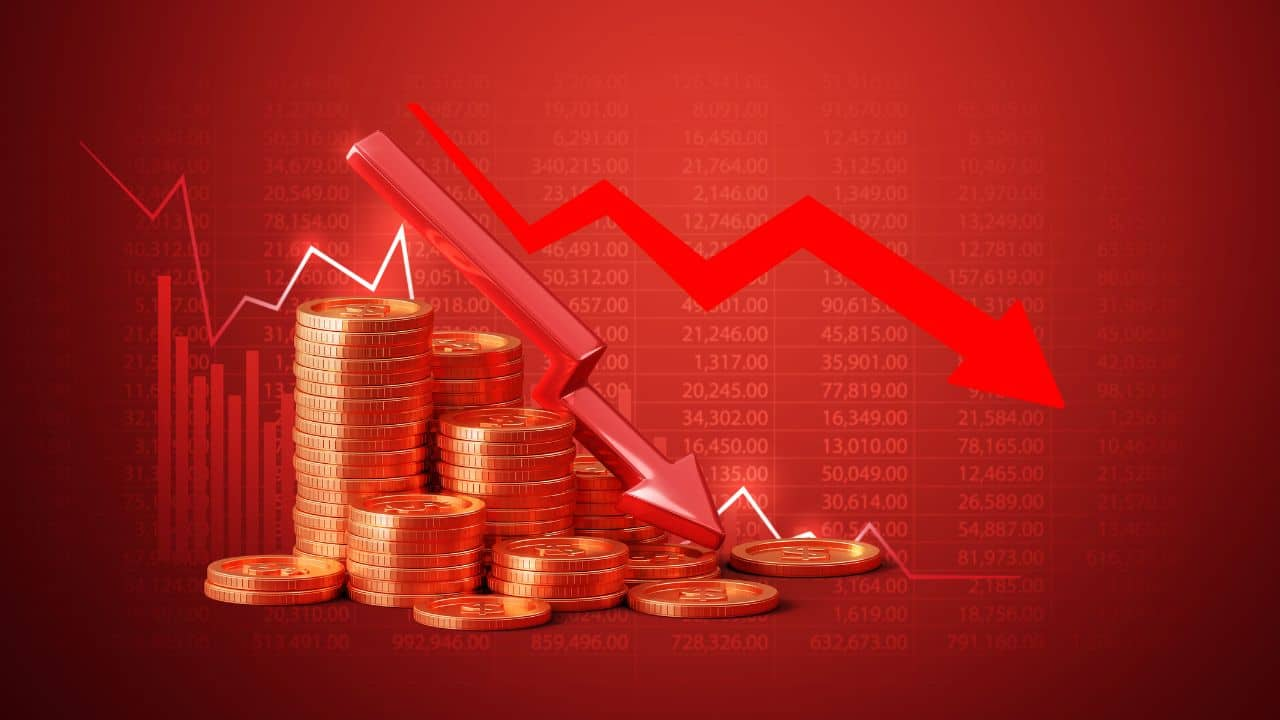 |
|
The Indian stock market experienced a significant downturn on Tuesday, with the benchmark indices Sensex and Nifty falling by up to 1 percent. This decline can be attributed to a confluence of global and domestic factors, primarily stemming from US President Donald Trump's renewed tariff threats against BRICS nations, disappointing Q3 corporate earnings, and persistent selling by foreign institutional investors (FIIs). The BSE Sensex plummeted by 848.65 points (1.1 percent) to close at 76,224.79, while the NSE Nifty shed 217.05 points (0.92 percent) to settle at 23,127.70. The volatility was further amplified by mixed global market sentiment and rising concerns about global trade disruptions, as evidenced by the India VIX increasing by over 5 percent during the trading session. The overall market mood was decidedly bearish, reflecting a combination of short-term anxieties and underlying economic uncertainties.
President Trump's aggressive stance towards BRICS nations, particularly his threat to impose 100 percent tariffs on countries reducing their reliance on the US dollar, significantly contributed to the market's downturn. This directly impacts India, a key member of BRICS, potentially disrupting its trade dynamics and leading to broader market anxiety. The uncertainty surrounding Trump's policies and his unpredictable nature have left investors cautious and hesitant to commit further capital. Adding to the trade war concerns, Trump’s announcement of 25 percent tariffs on imports from Canada and Mexico further intensified investor apprehension, raising fears of widespread global trade disruptions and economic slowdown. Analysts like Prashant Tapse of Mehta Equities highlighted the lingering uncertainty surrounding Trump's policies as a key factor behind the market's cautionary stance.
Disappointing Q3 corporate earnings further exacerbated the negative market sentiment. Several prominent companies reported weaker-than-expected results, impacting investor confidence. Dixon Technologies, for example, witnessed a 14 percent plunge in its share price after revealing a sequential decline in net profit and revenue for the December quarter. Zomato also experienced a significant 9 percent drop following the release of its Q3 results, which highlighted the negative impact of Blinkit's aggressive expansion on its profitability. The realty sector also contributed to the overall negativity, with Oberoi Realty's share price falling by 7.6 percent after its earnings fell short of market expectations. These disappointing results across key sectors underscored concerns about broader economic growth and fueled further selling pressure.
Adding to the global economic uncertainty, expectations of an interest rate hike by the Bank of Japan (BOJ) on Friday contributed to market jitters. This potential move would mark the first rate hike since July of the previous year, a decision that, coupled with weak U.S. jobs data at the time, caused significant market turmoil in early August. The prospect of increased borrowing costs globally, resulting from a BOJ rate hike, introduces further instability into an already fragile global economic landscape. The cumulative effect of these global headwinds further dampened investor sentiment in the Indian market, exacerbating the already existing negative pressures.
Persistent foreign institutional investor (FII) outflows continued to exert significant downward pressure on Indian equities. The sheer scale of FII selling, exceeding 50,000 crore, represents a substantial drain on the market's liquidity and serves as a clear indicator of waning confidence in the short-term prospects of the Indian economy. The upcoming Union Budget adds another layer of uncertainty, with investors adopting a wait-and-watch approach before making further investment decisions, pending the unveiling of potential policy announcements. Analysts such as Ruchit Jain of Motilal Oswal Financial Services highlighted the increased uncertainty reflected in the rising India VIX as a key factor contributing to the market's downturn. The combination of FII selling and the impending budget uncertainty reinforces the overall bearish sentiment.
The technical outlook for the market remains cautious. Anand James, Chief Market Strategist at Geojit Financial Services, noted that while the market held onto expected downside support levels, any upward momentum lacked the necessary strength to break through key resistance levels. This indicates a lack of strong buying pressure and suggests the possibility of further downward movement in the short term. The technical analysis points towards a continued struggle for the market to regain positive momentum, unless it can successfully breach significant resistance levels. The overall market sentiment remains fragile, with a high degree of uncertainty surrounding global economic conditions and domestic policy announcements.
In conclusion, the significant decline in the Indian stock market can be attributed to a complex interplay of factors, including Trump's tariff threats, weak Q3 earnings, and expectations of a BOJ interest rate hike. Persistent FII selling and the uncertainty surrounding the upcoming Union Budget further compounded these challenges, creating a bearish environment characterized by heightened volatility and caution. The technical analysis suggests that a sustained recovery requires overcoming significant resistance levels, and the overall outlook for the short term remains uncertain.
